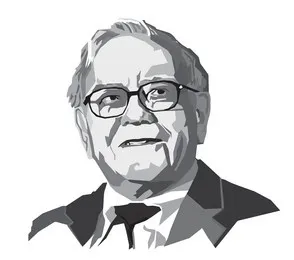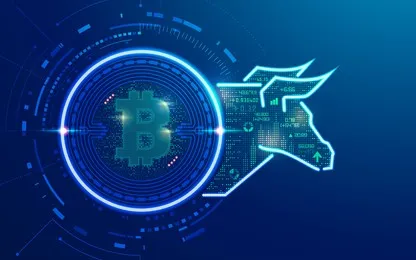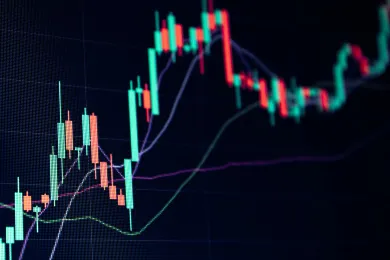Looking back at the US stock market over the past 10 years, one of the biggest characteristics is that growth stocks have performed well, with unexpectedly good returns. Meanwhile, the investment returns of value investors and fund managers have been disappointing.
For example, from the end of 2010 to the end of 2020, the annual return on the S&P 500 Value Index (measured in IVE) was around 7.8%. The annual return on the S&P 500 index (IVV) during the same period was 11.45%, while the annual return on the S&P 500 growth index (IVW) was around 14.45%. The return of the value index is not only inferior to the growth index, but also inferior to the overall stock market index of the same period.
Berkshire Hathaway, managed by Warren Buffett, the father of global value investing, has seen its stock price rise by around 11.2% per year over the same 10 years, similar to the return on the market index during the same period, but still inferior to the investment return on the growth index.

In theory, making money from a bull market is the easiest thing that even a fool can do: you just need to buy stocks, hold them patiently, and not sell them too early. But this investment method may seem simple, but it is difficult in practical operation and even more difficult for value investors. This is mainly because the core philosophy of value investing is to discover stocks whose market price is lower than their intrinsic value, buy them at a low price, and then wait until the market price is higher than their intrinsic value before selling them at a high price. However, in a bull market, the water level in the capital market generally rises, and even stocks of companies with poor fundamentals may be sold at high prices. In such an environment, value investors cannot find stocks that are worth buying in their eyes, so they are likely to sit in a hurry and accidentally miss out on the rapidly rising bull market. If it is an exceptionally long bull market with a duration significantly exceeding expectations, value investors are likely to suffer for several years or even longer.
In 1995, the US stock market rose by 38%, much to the surprise of many investors. Some well-known professional investors are beginning to show concerns about the rapid rise of the stock market. For example, Ray Dario, the founder of hedge fund Bridgewater in the United States, pointed out in an interview (Star, 1995) that I think the US stock market is approaching a stage of collapse. In the same year, Peter Lynch, former fund manager of Fidelity Magellan, pointed out in an interview (Rothchild, 1995) that investors were too careless and the stock market was likely to experience a decline of at least 20% or more within 18 months.
However, at that time, the US stock market did not experience a reversal as predicted by the two masters above. In 1996, the S&P 500 index rose by 23% again. Howard Marks, founder of Oak Capital in the United States, wrote in a memo (Marks, 1996) that every friend attending a party, and even every taxi driver, is discussing stocks and funds. Klarman (1996), founder of Baupost Fund and author of "Margins of Safety," wrote: "The current state of madness will eventually end in disaster, and we just don't know when it will happen.". Nobel laureate in economics and author of "Irrational Prosperity" Robert Schiller pointed out in his speech that the US stock market has risen to irrational levels.
However, the ups and downs of the market have their own patterns and will not shift due to the subjective will of certain participants. In 1997, the S&P 500 index rose another 33%. Another investment legend, George Soros, couldn't sit still. Not only did he say he was bearish on the stock market, but he also took action to short the US stock market. However, as British economist Keynes once said, the time the market remains irrational may be longer than the time you remain non bankrupt. In 1998, the S&P 500 index continued to rise by 27%. Soros, who chose to short, suffered heavy losses. As of early 1999, Soros managed a quantum fund that lost approximately $700 million in its short positions, accounting for about 10% of the total fund size.
During those crazy years, the biggest challenge faced by value investing philosophy was undoubtedly Warren Buffett, the stock god. During the four years from 1998 to 2002, Berkshire Hathaway's stock price return lagged behind the S&P 500 index by as much as 54% at its worst. The confidence of the world in value investing has plummeted to an unprecedented low. The Godfather of Value Investment, Buffett himself has been questioned by various media outlets: Is he still able to survive despite his old age?
However, the persistently high irrational market will eventually fall back to the ground. In March 2000, the Nasdaq index peaked and fell back after reaching a high of 5000 points, and began an avalanche of decline. At this time, it also means the arrival of spring for value investors. From July 1995 to October 2002, the Nasdaq index had an annual return of around 5.9%, but the maximum drawdown was as high as 75%. During the same period, the large market value index had an annual return of 12.2%, with a maximum drawdown of 39%, while the small market value index had an annual return of 16.8%, with a maximum drawdown of 26.5%. Both large and small market value investments have clearly outperformed technology growth stocks in terms of returns and risk control, finally allowing believers in value investing to breathe a sigh of relief.

The above historical and statistical data indicate that becoming a true value investor is much more difficult than most people imagine. The market is composed of millions of individuals, and one of their biggest characteristics is variability and lack of consistency. This also leads to uncertainty in the market, which is likely to be overvalued or undervalued for a long time. Therefore, even the best value investing guru Buffett may continue to lag behind the market average return for many years. Other fund managers and individual investors, not to mention.
Meanwhile, if investors want to overcome the market through value investing, they must force themselves to have patience and determination that ordinary people do not possess. What I mean by composure here may take 5, 10, or even longer. Buffett once said: If you haven't planned to hold a stock for 20 years, it's better not to buy it from the beginning. When your friends around you make big profits by buying stocks that do not meet the value investment standards, and your investment returns are far inferior to others, can you persist in being calm and unmoved? Many investors, when value investing performs well, claim to be fans of Buffett, but when growth stocks perform well, they turn around and become growth investors. This investment method of following the trend is essentially chasing gains and selling losses, and is more likely to buy at high levels and sell at low levels, making it difficult to achieve satisfactory investment returns for a long time.
Finally, regardless of the investment genre we believe in, we should adhere to independent thinking and not blindly follow others. In the previous text, we can see that even legendary professional investment managers like Peter Lynch and George Soros can make mistakes and make completely wrong judgments about the high and low points of the market. In today's information explosion, we often see and hear a certain investment giant V express their opinions on the top, bottom, and reversal timing of the market. The problem is that investments cannot be outsourced. Investors who lack independent thinking skills are considered lucky even if they make money, and such investment methods are clearly unsustainable.

Buffett's teacher, Graham, once said: the stock market is a voter in the short term and a weighing instrument in the long term. Smart investors will never be confused by short-term noise. By clarifying our own ability circle, exploring the most suitable investment method through practice and learning, and persisting in long-term investment for decades, we can survive in a market full of traps and risks and become the ultimate winner.
(Images from the internet)





